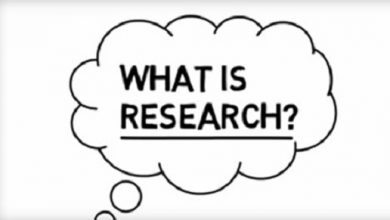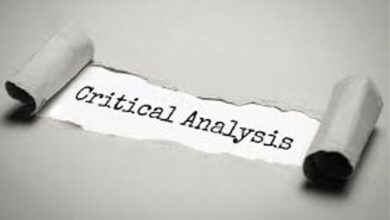How to make a scientific poster/Organization and planning/Templates
Learn how to make a science poster
The academic career usually starts with the presentation of papers at congresses, symposia, meetings, etc. So, nothing more interesting than receiving instructions and tips on how to make a scientific poster. Right?
Most scientific events opt for poster sessions for the vast majority of participants, reserving lectures for leading researchers in the area or for innovations.
A poster, panel or banner, as it is also known, is a form of exhibition that requires two main communication techniques: visual content and oral explanation, which is why it is considered a multimodal vehicle. Both techniques must be in harmony and be conveyed in an attractive and intelligible way.
Scientific posters will have fulfilled their purpose if they manage to attract the attention of the present public long enough to get their message across and stimulate interest in the research guidelines being exhibited.
In this post, we aim to guide you towards a good poster to publicize your scientific work.
Organization and planning to make a scientific poster
Before making your poster, make a plan and organize yourself. A scientific poster must contain:
- event title
- title of work
- Authors’ names and institutional affiliation of each one
- Introduction
- Material and methods
- Results
- Conclusion
- References
Make the following observations before starting to make your poster:
- Know your audience
Your presentation must fit the audience. If it is, for example, an international event, build your poster in English which is the universal language of science.
- Follow the dimensions and orientation (vertical or horizontal) of the poster determined by the organization of the event.
This standardization is what allows for a uniformity of presentations, therefore, carefully observe any recommendation in this regard. This information is usually found on the event website.
- Sketch the layout and content
Use a blank sheet to outline your poster, locating each topic, calculating, for example, by font size, where the figures should be and how to highlight the material and work method
Don’t forget that the poster is more of a visual vehicle than a reading. So, it is essential that everything is visually harmonious and not cluttered, making it easier to read, in such a way that people can identify the content even when viewed from a distance.
- The poster must be focused
It is very important to put the most relevant points on the poster. Don’t get too caught up in the details. These you will be able to clarify at the time of the presentation.
How to make an attractive scientific poster?
A poster presentation session of a scientific meeting is usually a place full of people interested in the topic at hand. A poster should be attractive from 10m away.
So how do you make your work stand out from thousands of other posters? Here are some tips to make your banner attractive:
- Highlight the title – choose a short, objective title that makes clear what your research is about.
- Highlight the objectives and conclusions – these steps are the ones that initially interest the visitor the most.
- Distribute the sections well – make a good layout so that the sections of your poster are well defined. The poster divided into three columns is very effective.
- Use large fonts – if there is no guideline in the standards you can use eg size 30 for text, 70 to 85 for headline. A poster should be easily read from 2m away.
- Choose fonts without embellishments – non-serif fonts like Arial, Times New Roman, Caliber, Tahoma and Verdana make it easy to read from a distance.
- Take care in the illustrations – good images (figures, tables, graphs, etc.) attract visitors, even before they know what your poster is about. But, never use an image unrelated to your work.
- Less text is better – Your dashboard shouldn’t feel crowded. A clean layout gives an idea of organization and draws the public’s attention. If the rules are not determined, use up to 500 words (excluding the picture descriptors).
- No grammatical errors – spelling and/or concordance errors can put your work at risk. Make multiple revisions.
- Make a good color match – Ensure a significant contrast between the background and the text color: light background to dark text so as not to tire the reader. Highlight section titles in a different color from the text, but without mixing tones.
For example, if you analyzed 3 variables, use a color for each one and each time you refer to them, use the corresponding color to identify them, in charts, tables, graphs, etc.
If using a background image, choose one with excellent resolution and graphic quality and one that blends in with the rest of the poster.
Templates for making scientific poster
Each scientific event has its own technical standards for presentation. Follow them to the letter. However, your poster should not contain anything that you are unfamiliar with. Each sentence, each figure has to be very well prepared so that you always have an explanation supported by results and references.
Examples :
- The 49th Brazilian Geology Congress / 9th Cretaceous Symposium in Brazil / VII Symposium on Volcanism and Associated Environments , instructs the participants almost without specific rules:
– The format of the poster must be 0.90m wide x 1.20m high, with a stick and rope and its editing (fonts, colors, tables and graphics) may be freely prepared by the author.
- The Brazilian Congress of Automatics (CBA 2018) guides participants as follows:
– Authors can choose to include additional sponsor logos. The suggested poster size is 80 cm wide by 120 cm high (due to the size of the support). Note that for a good quality print, your pictures should have a resolution of at least 300dpi.
– The poster title must be in Calibri size 54, bold, centered. Authors’ names must be in Calibri 36, bold, centered, black. Membership and email addresses must be in Calibri 22, bold, centered. Section titles must be in Calibri 40, bold, centered.
– All normal text must be in Calibri 36, normal, justified, black. Figure and table legends must be in Calibri 28, bold, centered above the figure or table. The text inside the figures (captions, numbers, etc.) and tables must be similar in size to the dimensions of the captions (Calibri, 28) so that they can be read from 1.5m away.
Science poster designer software
There are several free downloadable programs you can use to build your science poster, such as:
QuarkXPress, InDesing, LaTex, and Scribuss.
However, the most used is Microsoft Power Point due to its ease of access and handling. In it, you’ll be able to create your work on a single slide, in separate blocks and place the images you want.


